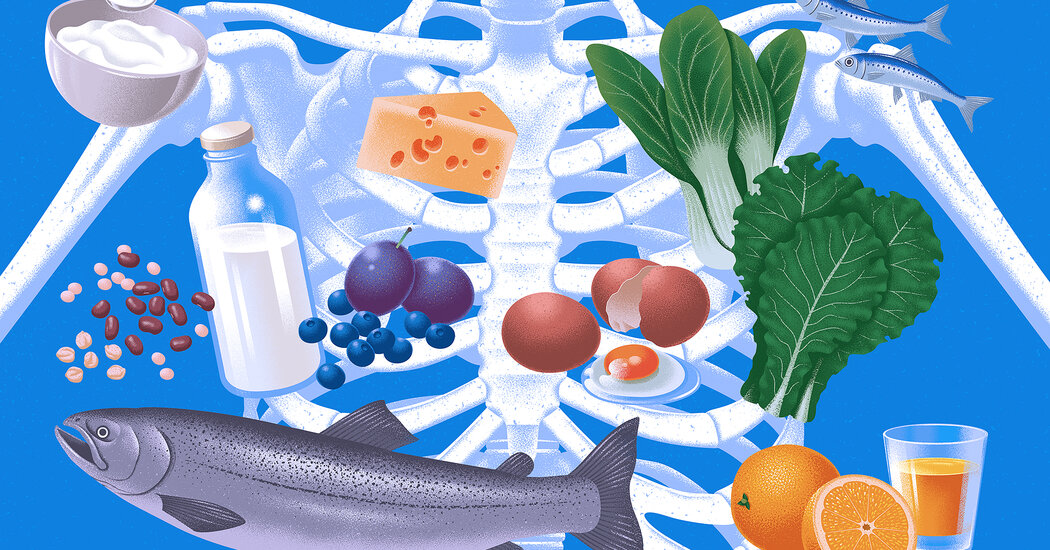Bone loss is a natural part of getting older, but prioritizing certain foods can help slow the process down.
As we age, our bodies break down more bone tissue than they build. This can increase the risk of osteoporosis, a condition defined by weak, brittle bones, which can make them more susceptible to breaks and fractures. And for older adults, the results can be devastating — broken or fractured bones may give way to lengthy hospital or nursing home stays, long-term disability or even death.
The prime time to build bone is during adolescence, when the body is growing and devoting more resources to the task. And while your age, gender and genetics play significant roles in bone health, there are ways to slow bone loss in midlife and beyond. Exercise is a major part of this, but your diet is a big player, too, said Dr. Bess Dawson-Hughes, a professor and senior scientist at the U.S.D.A. Nutrition Center at Tufts University.
Here are some nutrients to prioritize to keep your bones healthy as you age.
Calcium
When you don’t get enough calcium from food, your body will pull the mineral from your bones, which can make them weaker, said Sue Shapses, a professor of nutritional sciences at Rutgers University. Your ability to absorb calcium from food declines as you age too, she said.
According to the National Institutes of Health, women ages 19 to 50 need 1,000 milligrams of calcium each day, and 1,200 milligrams if they’re 51 or older. Men ages 19 to 70 need 1,000 milligrams, or 1,200 milligrams if they’re older.
Experts say that, if possible, it’s best to meet these recommendations with your diet rather than with supplements. Dairy products like milk and yogurt are excellent sources of calcium, said Connie Weaver, a research professor at San Diego State University who studies how diet influences bone health. One cup of low-fat Greek yogurt, for example, contains about a quarter of the calcium most people need in a day, she said.
Other calcium-rich foods include beans; tofu; calcium-fortified plant milks; small bone-in fish like sardines; and leafy green vegetables like kale and collard greens.
